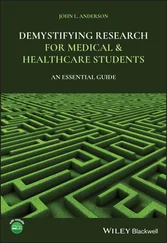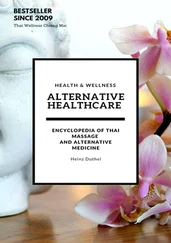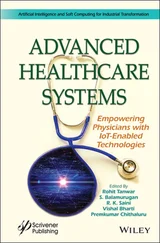The realities of current practice require professionals to operate in a challenging and complex system, that is fast paced and dynamic. In order for professionals to lead and influence person‐centred practice at micro, meso, and macro levels, they should be positive role models who demonstrate person‐centredness in their practice. In this chapter we have used activities to highlight the important role that professionals play in providing safe, effective, person‐centred practice. We have considered some of the tensions that arise when upholding professionalism whilst striving to be person‐centred and offered some strategies to support professionals in raising concerns or challenging practice that is unprofessional. As a health or social care professional, you will occupy a position of privilege and trust. This position brings with it certain expectations and responsibilities as set out by your regulator. Central to these responsibilities is the need to act at all times with honesty and integrity and to behave in a way that reflects well on the profession and how it is perceived by the public. Being a health or social care professional and acting professionally can also bring a great sense of personal and collegiate pride in knowing that individually and as a profession, you can make a positive difference to the lives of others.
Professional standards exist to protect the public and maintain public confidence in the health and social care professions.
It is important to be familiar with the requirements for professional practice and revalidation as set out by the regulator in the jurisdiction where you practise.
Reflection and sharing of constructive feedback with others enables health professionals to create accurate perceptions of their practice. This can be used as a basis for developing practice.
We all have a responsibility for maintaining and promoting acceptable standards. This includes raising concerns without delay when practices are not person‐centred.
Practising professionally involves acting in the best interests of people, being committed to professional development, leading by example and upholding the reputation of the profession to which you belong.
Additional learning activities
We have devised the following learning activities that can be undertaken before, after or during your reading of Chapter 6.
1 Positioning professionalism within the PcPFGo to the PcPF on page 000 and look at the different domains and make some notes on the following questions.Which components would you associate with professionalism?How do these fit with your earlier thinking of the meaning of professionalism?What other factors not stated in the model link to professionalism?Once you have read the chapter go back to your notes. Reflect on any ways in which your thinking has changed or your prior assumptions about professionalism have been changed as a result of your reading.
2 Standards for professional practiceIdentify the relevant documents for your professional group and at least one other.Explore the common elements of professional practice that are included in these documents.
3 Legal and ethical responsibilitiesRead the short case study below and make notes on each of the discussion points.Jean Jones is a 35‐year‐old woman who lives alone. She has some learning difficulties and is unable to read and write. She has a key worker who visits three times a week to help with life skills such as budgeting and housekeeping. She has started a relationship with a young man she met at the local community centre. The key worker is concerned about how far this relationship will go and suggests accompanying her to visit the general practitioner to discuss contraception and Jean's sexual health. At the appointment the key worker stresses that Jean is unable to understand the consequences of having unprotected sexual intercourse.
Discussion points
What professional issues does this case study raise?
Using the PcPF, explore which of the components of the person‐centred processes domain you would apply in considering Jean's needs, preferences, wishes and rights.
Reflective notes
In your discussion you may have considered issues such as capacity to consent, stigma, autonomy and power. As a vulnerable person Jean may lack capacity to consider the consequences of her action, for example an unplanned pregnancy. In addition, the healthcare professionals must also consider whether sex is consensual. This must be balanced with Jean's human rights to engage in an intimate relationship. In relation to the PcPF, you may have highlighted shared decision making, working with the person's beliefs and values and providing holistic care. Jean should not be defined by her disability but as a person with needs, preferences and desires. Professionals may also consider their own responses and assumptions or even prejudices when faced with such ethical dilemmas.
If you are interested in reading further about this issue, see:
www.bihr.org.uk/learning‐disability‐autism‐and‐human‐rights
https://journals.sagepub.com/doi/full/10.1177/1363460715620576
https://improvement.nhs.uk/improvement‐hub/learning‐disabilities
1 American Dental Association (2019). Staying Well in the Dental Profession. https://success.ada.org/en/wellness/staying‐well‐in‐the‐dental‐profession
2 Corley, M.C. (2002). Nurse moral distress: a proposed theory and research agenda. Nursing Ethics 9 (6): 636–650.
3 Dalton, L., Campbell, S.J. and Bull, R. (2015). Preparing graduates for professionalism and person centred practice: developing the patient voice in nurse education. 2nd International Conference: Where's the Patient's Voice in Health Professional Education – 10 Years On? 12–14 November, Vancouver, Canada. http://ecite.utas.edu.au/104840
4 Department of Health (2010). Equity and Excellence‐Liberating the NHS. London: HMSO.
5 Dewing, J. (2008). Becoming and being active learning workplaces: the value of active learning inpractice development. In: International Practice Development in Nursing and Healthcare (eds. K. Manley, B. McCormack and V. Wilson), 273–294. Oxford: Blackwell Publishing.
6 Douglas, N., Robinson, J., and Fahy, K. (2001). Inquiry into Obstetric and Gynaecological Services at King Edward Memorial Hospital 1990–2000. Perth: Government of Western Australia.
7 Francis, R. (2013). The Mid Staffordshire NHS Foundation Trust public inquiry. https://webarchive.nationalarchives.gov.uk/20150407084231/http://www.midstaffspublicinquiry.com/report
8 Gardner, F. (2014). Being Critically Reflective. Engaging in Holistic Practice. London: Red Globe.
9 Gosport Independent Panel (2018). Gosport War Memorial Hospital: The Report of the Gosport Independent Panel. www.gosportpanel.independent.gov.uk/panel‐report
10 Griffiths, R. and Tengnah, C. (2017). Law and Professional Issues in Nursing, 4e. London: Learning Matters, Sage.
11 Hamric, A.B. (2010). Moral distress and nurse‐physician relationships. Journal of the American Medical Association 12 (1): 6–11.
12 Levinson, W., Ginsbury, S., Hafferty, F.W., and Lucey, C.R. (2014). Understanding Medical Professionalism. New York: McGraw‐Hill.
13 Mann, K., Gordon, J., and MacLeod, A. (2009). Reflection and reflective practice in health professions education: a systematic review. Advances in Health Sciences Education 14: 595–621.
14 Sinclair, C.M. (2000). The Report of the Manitoba Paediatric Cardiac Surgery Inquest: An Inquiry into Twelve Deaths at the Winnipeg Health Sciences Centre in 1991. Winnipeg: Provincial Court of Manitoba.
15 Walshe, K. and Shortell, S. (2004). When things go wrong: how health care organizations deal with major failures. Health Affairs 23 (3): 101–111.
Читать дальше












